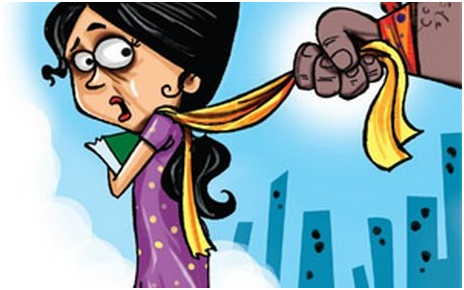Sexual Harassment In Universities: It Exists But Is Ignored

Recently a Chemistry PhD student at Delhi University accused an assistant professor of St Stephen’s, Satish Kumar, of sexual harassment. The debate that sparked off in the media concentrated on the role the college principal, Valson Thampu, in attempting to shield the perpetrator. What got lost in this ‘St Stephen’s Row’ discussion is the hard fact that sexual harassment did take place and what perpetuated it.
Sexual harassment in our educational institutions is a topic that, for some unfathomable reason, has not been given the due consideration that it essentially requires. Therefore, in order to propagate discussion in this area, there are two concrete facts that need to be bought to light; first, sexual harassment is prevalent in Indian campuses, and second, the hierarchical power system in the Indian Higher Education System emboldens such occurrences.
Sexual harassment on campuses exists, and very much so. HRD minister Smriti Irani earlier this month told the Lok Sabha that 75 sexual harassment cases in higher educational institutes have been reported between April 2014 and March 2015, 27 of which are from Delhi alone. Uttar Pradesh is at the second position with 23 cases. These figures are adapted from the report received by UGC about cases of sexual harassment against women lecturers, professors and research scholars from 84 universities. The figure would presumably be larger if we include undergraduate and graduate women pursuing taught courses in Indian universities.
The threat of misogyny is evidently prevalent in India, substantiated by the high rate of rapes and sexual assaults. However, one assumes that the hub of intellect, the higher education space, would be free such from patriarchal and bigoted mind-sets that perpetuates into unwanted sexual advances. After all, education is considered a major solution for achieving gender equality. Yet we have 75 cases (a substantial number given that the sample was circumscribed to one year’s time period) of women scholars sexually harassed. If our academics themselves are intimidating and exploiting their female counterparts, then what knowledge are we spreading? If our intelligentsia is participating in acts that victimise women, then what are we teaching our students?
The second neglected fact about harassment on campuses in that sexual aggravation in a workplace like education institutions flows from the power attributed by hierarchy in India. In any workplace, a man with power over a woman due to the position ascribed to him can use it to subject her to unwanted sexual advances. In an Indian education institution, there are three ordered positions where power can be misused - first, the teacher/ supervisor; second, the head of the institution; third, the Internal Complaints Committee (ICC).
A negative use of hierarchical power takes its first step when the teacher or supervisor is given sufficient clout over his tutee. If she objects or complains, he can use his position to undermine her academic work and career as access to labs, stipends, and successful completion of a thesis is dependent on his approval. In such a scenario, one would consider complaining to the head of the institution. However, matters become worse if the head chooses to the shield the perpetrator, instead of defending the rights of women to a safe workplace, so as to avoid a negative reputation for the institution. To top this, if the ICCs comprise of representatives nominated (and ergo influenced) by the principal, as in the case of Delhi, then the result is total isolation of the victim.
Our education institutions need to cultivate a culture whereby supervisors do not have superfluous clout over their tutees, principals care more about their researchers’ right to a safe workplace rather than the intuition’s repute, and the ICC is independent of the principal. Ordinance XV-D, that was won by university staff and students after the Vishakha judgement but replaced by DU overnight, needs to be reinstated in Delhi. The ordinance prescribes a working model of functional ICCs and a university-level apex body with elected representation from staff, teachers, students and karamcharis. Therefore, reinstating the ordinance would result in the removal of the current absolute power prescribed to the principal.
Despite its significant implications the power structure of our institutions and the education of our students, the issue of sexual harassment on campuses has somehow gone largely unnoticed. It is absolutely mandatory for the country to realise and address this imperative issue as college campuses should ideally be a space dissuading misogyny, not promoting and embedding it through sexual assaults. Thankfully, the Delhi Commission for Women has attempted to remedy this lack of discussion by sending a notice earlier this month to Delhi's 23 educational bodies, including the Delhi University, to state the number of sexual harassment complaints received from students or employees since 2013-14. "We are conducting a study on women's safety in Delhi... Collecting data will help us in ensuring effective implementation of the Sexual Harassment of Women at Workplace Act," Delhi Commission for Women (DCW) chief Swati Maliwal said in the notice.
Such initiatives are imperative in order to shed light on this issue and pay due consideration to factor enabling such impropriety. Therefore, it is essential that our policy makers, education heads and education pundits thoroughly address the issue of sexual harassment in work places, and draw solutions to the hierarchical clout used in these institutions to pressurise women.
(Jaskiran Bedi is a PhD Researcher at the University of Cambridge. Her research area focuses on Institutions in India, Growth study, and the Political Economy of Education. )



